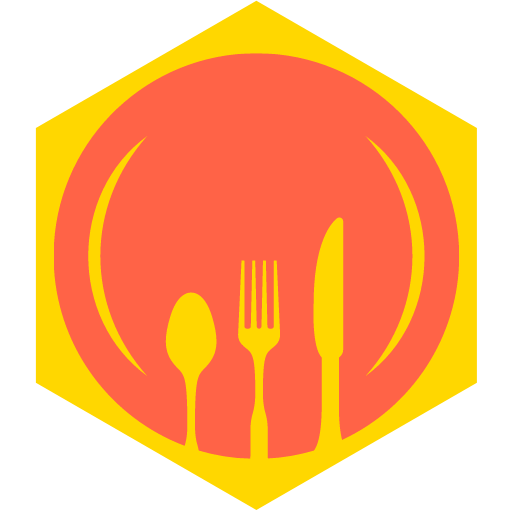The charm of a quaint café often lies not just in its ambiance or the aroma of freshly brewed coffee but significantly in the way its menu is presented. A well-crafted 2D cafe menu serves as a bridge between the culinary delights and the customers’ expectations.
It’s an artistic yet practical tool that combines clarity, style, and usability to entice patrons and guide them seamlessly through the offerings. Unlike complex digital interfaces or bulky printed catalogs, a 2D menu balances simplicity with visual appeal, making it an essential asset for any café striving to create a memorable dining experience.
Designing such a menu requires more than just listing items; it demands thoughtful organization, aesthetic balance, and an understanding of customer psychology. A 2D menu’s layout and design influence how customers perceive the brand, the ease with which they make choices, and ultimately, the satisfaction they derive from their visit.
From font choices to color schemes, and from categorizing dishes to highlighting specials, every element plays a strategic role. Mastering these aspects can elevate a café’s identity and significantly boost sales.
Whether for a cozy neighborhood spot or a bustling urban café, the 2D menu acts as a visual storyteller, inviting guests to explore flavors, discover new favorites, and return for more. This exploration unfolds through carefully curated sections, intentional design decisions, and an understanding of how to communicate a café’s unique character through a flat, yet dynamic canvas.
Essentials of Effective 2D Cafe Menu Design
An effective 2D cafe menu blends functionality and aesthetics to offer a smooth customer experience. At its core, it is a communication tool that must clearly convey the available options while reflecting the café’s brand personality.
Good menu design starts with a clear hierarchy. It guides the eyes naturally across categories, making it effortless for customers to navigate.
Using typography, spacing, and color contrast strategically can steer attention toward signature dishes or promotions.
Moreover, the menu should align with the café’s overall theme. A rustic coffee shop might benefit from earthy tones and hand-drawn illustrations, while a modern café could opt for sleek fonts and minimalist layouts.
The goal is to create a cohesive experience that resonates with the target audience.
Key Design Principles
- Clarity: Use legible fonts and concise descriptions.
- Consistency: Maintain uniform style across sections.
- Balance: Avoid clutter by spacing elements thoughtfully.
- Highlighting: Emphasize popular or profitable items.
“A menu is not just a list of food; it’s a visual ambassador of your café’s soul.”
Keeping these principles in mind ensures the 2D menu is inviting and easy to use, fostering positive customer interactions.
Structuring Your 2D Cafe Menu for Maximum Impact
The structure of a 2D cafe menu plays a pivotal role in shaping customer decisions. Logical grouping and clear segmentation can make the difference between a confusing experience and a delightful one.
Typically, menus are divided into sections such as beverages, breakfast, lunch, desserts, and specials. Each section should begin with a brief introduction or thematic element that sets the tone.
This not only informs but also entices customers to explore further.
Using subheadings and bullet points enhances scan-ability. In busy settings, customers often skim menus quickly; a well-structured layout accommodates this behavior and minimizes decision fatigue.
Sample Section Layout
| Section | Purpose | Design Tips |
| Beverages | Showcase coffee, tea, and specialty drinks | Use icons or small images for visual appeal |
| Breakfast | Highlight morning offerings with clear descriptions | Use warm colors to evoke morning freshness |
| Desserts | Tempt customers with sweet treats | Include mouth-watering photos or illustrations |
Creating a thoughtful structure encourages upselling and cross-selling by naturally guiding customers through complementary choices.
Typography and Color Schemes in 2D Cafe Menus
Typography and color schemes are fundamental elements that influence both readability and mood. Selecting the right fonts and colors can enhance the menu’s effectiveness and reinforce the café’s brand image.
Choosing fonts involves balancing style with legibility. Decorative fonts might capture attention but should be limited to headings or highlights.
Body text benefits from clean, simple fonts that are easy on the eyes. Mixing too many typefaces, however, can create confusion and reduce professionalism.
Color schemes should harmonize with the café’s interior and branding. Colors can evoke emotions—warm tones like reds and oranges stimulate appetite, while cool blues and greens suggest calmness and freshness.
Typography and Color Combinations
- Serif fonts: Convey tradition and reliability; great for upscale cafés.
- Sans-serif fonts: Modern and clean; ideal for contemporary spaces.
- Bold colors: Draw attention to special offers and new items.
- Muted tones: Create a relaxed atmosphere suitable for slow dining.
“The right font and color combo doesn’t just look good—it speaks the language of your café’s ethos.”
By thoughtfully pairing typography and colors, menus become visual narratives that enhance the overall dining experience.
Incorporating Illustrations and Imagery
Visual elements like illustrations and imagery can significantly enrich a 2D cafe menu. They serve to attract attention, clarify offerings, and create emotional connections with customers.
Illustrations lend a handcrafted feel and can be customized to match the café’s style. For instance, sketches of coffee cups or pastry items can add charm and personality.
Photographs, on the other hand, provide realistic depictions that may help customers make decisions, especially when items are unfamiliar.
However, overusing images can clutter the menu and distract from the food descriptions. A balanced approach is essential, using visuals sparingly to complement rather than overwhelm the text.
Best Practices for Visual Elements
- Use high-quality images with consistent lighting and color tones.
- Incorporate hand-drawn illustrations for a unique, artisanal touch.
- Align images with the text layout for a harmonious design.
- Limit the number of images to maintain readability and flow.
“Visuals should enhance, not overpower—the secret to a captivating cafe menu.”
When used strategically, illustrations and imagery can elevate a simple menu into a compelling visual journey.
Highlighting Specials and Signature Items
Spotlighting specials and signature dishes is a powerful tactic to drive sales and build brand identity. A 2D cafe menu offers multiple design opportunities to make these items stand out.
Using graphic elements such as borders, shading, or icons can draw the eye to featured items. Descriptive language combined with appealing visuals further entices customers to try these highlighted offerings.
Strategically placing specials near the top or center of the menu ensures maximum visibility. Rotating specials regularly can keep the menu fresh and encourage repeat visits.
Techniques to Emphasize Key Items
| Technique | Effect | Example |
| Colored background box | Creates focal point around the item | Highlighting a seasonal latte with a warm orange box |
| Icons or badges | Quickly signals popularity or chef’s recommendation | Star icon next to the house special sandwich |
| Italicized or bold font | Distinguishes specials from regular items | Daily quiche in bold font |
“Highlighting the right items can turn casual browsers into enthusiastic buyers.”
Effectively emphasizing specials and signature dishes can increase average order value and foster customer loyalty.
Optimizing Menu Descriptions for Engagement
Compelling menu descriptions are vital in communicating the essence of each dish and persuading customers to order. The language used can transport diners to the experience behind the food and drinks.
Descriptions should be concise but evocative, avoiding jargon while highlighting key ingredients, textures, or preparation methods. Using sensory words such as “creamy,” “crisp,” or “aromatic” appeals to the imagination and appetite.
It’s also important to consider dietary preferences and allergies by clearly indicating vegetarian, vegan, gluten-free, or spicy options. This thoughtful inclusion enhances customer trust and satisfaction.
Guidelines for Writing Menu Descriptions
- Keep it brief: One to two sentences per item.
- Use vivid adjectives: Bring the dish to life.
- Highlight unique elements: What sets the dish apart.
- Include dietary info: Mark allergen-free or special diet options.
“Words can whet the appetite as powerfully as the aroma of fresh coffee.”
Well-crafted descriptions transform a simple list into an enticing narrative, guiding customers toward satisfying choices.
Printing and Material Choices for 2D Menus
The physical presentation of a 2D cafe menu extends beyond design into the choice of printing and materials. These factors affect durability, tactile experience, and overall impression.
Menus printed on high-quality paper or cardstock convey professionalism and care. Laminated or coated finishes protect against spills and wear, essential in busy café environments.
Alternatively, textured papers or recycled materials can reinforce a brand’s commitment to sustainability.
Size and format also influence usability. Compact menus are easy to handle and store, while larger formats offer more space for detailed descriptions and visuals.
Comparing Material Options
| Material | Advantages | Considerations |
| Glossy laminated cardstock | Durable, vibrant colors, easy to clean | Can reflect light, harder to write on |
| Matte recycled paper | Eco-friendly, soft texture, reduces glare | Less resistant to spills and tears |
| Plastic synthetic paper | Waterproof, extremely durable | Less environmentally friendly, higher cost |
“The feel of your menu is the first touchpoint of your café’s quality.”
Selecting the right materials ensures menus remain attractive and functional throughout their lifecycle, reinforcing the customer’s positive impression.
Conclusion
The artistry and strategy behind a 2D cafe menu extend far beyond simple food listings. It is a vital tool that fuses design, psychology, and branding into a cohesive experience.
By meticulously considering layout, typography, color, visuals, and descriptions, cafés can create menus that not only inform but also inspire and delight customers.
Furthermore, the physical quality of the menu—its printing and materials—reflects the establishment’s values and attention to detail. A well-crafted menu invites exploration and encourages patrons to savor new flavors, enhancing their overall satisfaction and loyalty.
As cafés compete in a crowded market, the 2D menu stands as a silent yet persuasive ambassador, one that can transform casual visits into lasting memories.
Ultimately, investing time and creativity into the design and presentation of a 2D cafe menu pays dividends in customer engagement, brand strength, and revenue growth. It’s an opportunity to communicate your café’s unique story and passion through every page, welcoming guests to experience more than just a meal but a cherished moment.


